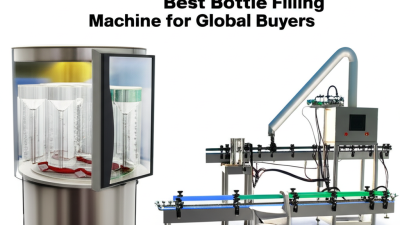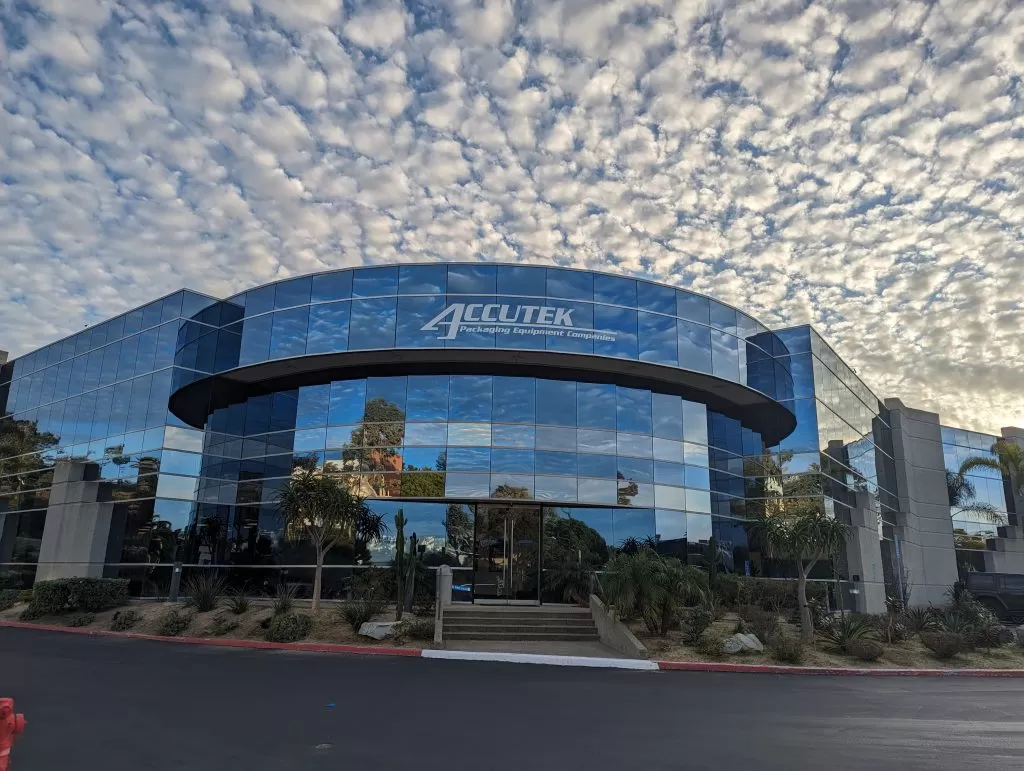In an era where efficiency and sustainability drive manufacturing innovations, the demand for advanced bottle filling machines has surged remarkably. According to a recent report by the International Bottled Water Association, the bottled water industry alone is projected to reach a market value of $307.3 billion by 2023, prompting global buyers to seek the most efficient and eco-friendly solutions. As producers strive to meet rising consumer expectations while minimizing waste, the role of sophisticated bottle filling machines becomes pivotal. China, renowned for its craftsmanship and robust manufacturing capabilities, has stepped up to deliver cutting-edge technologies that cater to these evolving market needs. This blog will explore innovative alternatives to traditional bottle filling machines, emphasizing the importance of precision engineering and adaptability in serving a global clientele efficiently and sustainably.

The quest for innovative solutions to tackle the common challenges posed by traditional bottle filling machines is more pertinent than ever. Conventional machines often suffer inefficiencies that can hinder productivity and drive up costs, especially for global buyers who are seeking reliability and flexibility in their operations. In this context, SDI's Stela solution shines as a game-changer.
By integrating advanced technology and user-friendly interfaces, Stela enhances operational efficiency while significantly reducing the learning curve for clinicians and operators alike. This addresses the pressing need for optimized workflows and ease of use in fast-paced environments.
Moreover, the need to rethink our approach to plastic packaging is becoming increasingly critical in light of environmental concerns. The traditional bottling processes contribute to plastic waste, exacerbating pollution issues worldwide. Exploring alternatives such as bioplastics and reusable models is essential in this regard. These innovative approaches not only promise reduced environmental impact but also align with the growing consumer demand for sustainable products. Forward-thinking companies are already testing various reuse-refill models, leading to a packaging revolution that emphasizes sustainability while maintaining product integrity and safety. As the industry shifts towards these innovative solutions, it paves the way for a more responsible and eco-friendly future in the packaging landscape.
Automation has profoundly transformed the bottle filling industry, significantly enhancing both efficiency and quality. A recent report from MarketsandMarkets indicates that automation in packaging can lead to a productivity increase of up to 30%, while reducing error rates by 20%. This shift not only streamlines the filling process but also ensures consistent product quality, as machines provide precise measurements that manual operations often struggle to maintain. As global buyers seek to enhance their production lines, the integration of advanced technologies becomes a critical factor in staying competitive.
**Tips:** When considering automation solutions, evaluate the adaptability of the machinery to your specific bottle shapes and sizes, as versatility can greatly influence long-term productivity. Additionally, investing in equipment with advanced sensors can help in monitoring fill levels in real-time, allowing for immediate corrections that minimize waste and maximize profit.
Embracing automation doesn't just improve efficiency; it can also have a positive impact on sustainability. According to a study by the International Society of Automation, automated systems can reduce packaging waste by up to 25%, as they are designed to optimize material usage. This not only contributes to a greener production process but also aligns with the increasing consumer demand for environmentally responsible practices.
**Tips:** Ensure to choose machines that are optimized for energy efficiency, as this can lead to significant cost savings and promote a more sustainable operational model. Always assess the return on investment through comprehensive cost-benefit analysis before making a purchase.
In today’s environmentally conscious market, global buyers are seeking sustainable alternatives to traditional bottle filling machines. The demand for eco-friendly solutions has given rise to innovative technologies that not only minimize waste but also enhance efficiency in the bottling process. Manufacturers are now focusing on developing systems that incorporate renewable materials and energy-efficient operations, ultimately reducing their carbon footprint.
One promising approach is the utilization of biodegradable materials for containers, which align with global sustainability goals. Additionally, advances in automation and smart technology allow for more precise filling processes, reducing overfilling and product waste. These innovations use integrated systems that recycle air and water during the filling process, further supporting an eco-friendly initiative.
As companies prioritize sustainability, adopting these advanced, green bottle filling solutions can significantly benefit both the environment and their bottom line, allowing for a competitive edge in a growing market.
In the competitive marketplace, startups are increasingly seeking cost-effective innovations in
bottle filling technology to enhance productivity and maintain quality.
According to a recent report by MarketsandMarkets, the global bottle filling machine market is projected to reach
$4.25 billion by 2026, growing at a
CAGR of 4.8%. This uptick highlights the importance of affordable,
high-quality bottling solutions that cater to emerging businesses with limited budgets.
One strategy for startups is to consider semi-automatic filling machines, which can significantly reduce initial investments
while offering flexibility in production volume. These machines often require lower maintenance costs compared to fully
automatic systems, making them an attractive option for businesses looking to scale gradually.
Tip: Research different suppliers and request demos to find the best fit for your specific needs.
Moreover, leveraging technology such as IoT and smart sensors can enhance the efficiency of bottle filling systems without
substantial upfront costs. These advancements can optimize production processes, leading to reduced waste and improved
operational performance.
Tip: Implement regular training sessions for your staff to maximize the utility of new technology and improve overall productivity.
As startups explore these innovative solutions, they can position themselves well in the evolving landscape of the bottling industry.
The global market for liquid filling machines is positioned for robust growth, with projections indicating an increase from $6.82 billion in 2025 to $10.39 billion by 2032, reflecting a compound annual growth rate (CAGR) of 6.2%. This growth is greatly influenced by the increasing demand for user-friendly bottle filling machines that enhance the overall user experience, especially in sectors like skincare, healthcare, and sustainable packaging. As businesses look for efficient and easy-to-operate machinery, the focus on innovation in design and functionality becomes paramount.
In the skincare sector alone, the market size is anticipated to rise from $122.11 billion in 2025 to an impressive $194.05 billion by 2032. This surge emphasizes the need for advanced packaging solutions, including ergonomic filling machines that cater to varying product viscosities. With the sustainable packaging market also projected to grow from $305.19 billion in 2025 to $552.45 billion by 2033, it is evident that both aesthetics and functionality will shape the future of packaging solutions, making the selection of filling machinery crucial for global buyers.
Accutek Packaging Equipment Companies, Inc. stands as one of the premier privately owned packaging machinery manufacturers in the United States.

Sign up for all the news about our latest arrivals